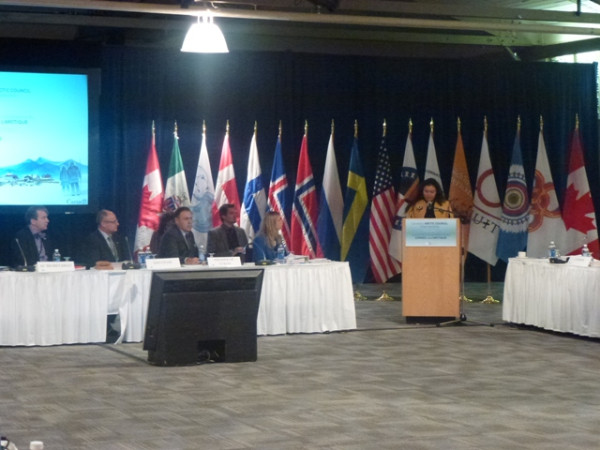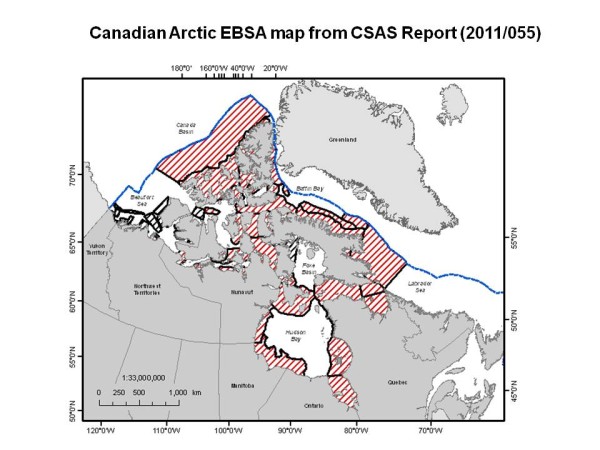Arctic Council – First steps under Canada’s leadership
There’s been a fair amount of interest in Canada’s assumption this past May of a two-year term as Chair of the Arctic Council. Minister Leona Aglukkaq, Canada’s Chair (and newly minted Environment Minister) has identified Canada’s priorities under the overarching theme of “development for the people of the North.” Recently we got an initial look at what will emerge over the next two years, as the Arctic Council’s Sustainable Development Working Group had its first full meeting since Canada assumed the role of chair. I had the opportunity to attend this meeting as well as the meeting of Senior Arctic Officials that immediately followed, representing WWF, which is the only international environmental NGO with Observer standing at the Arctic Council. The meetings took place in Whitehorse, within the traditional territories of Ta’an Kwatch’in Council and Kwanlin Dun First Nations.
Four initiatives were reviewed by the Working Group and approved by the Senior Arctic Officials, aimed at addressing diverse challenges facing northerners, including suicide prevention, gender equity, cancer rates and community adaptation to climate change. These initiatives will identify and promote best practices across the circumarctic region, so that they can be more effectively implemented everywhere.
The new focus on social well-being has been welcomed by all, but it does not mean that the Arctic Council has forgotten about its previous emphasis on environmental conservation. Indeed, a major landmark was recently achieved, with the publication of a report on the Identification of Arctic marine areas of ecological and cultural significance. This report is in response to a recommendation contained in the 2009 Arctic Marine Shipping Assessment (AMSA): “That the Arctic states should identify areas of heightened ecological and cultural significance in light of changing climate conditions and increasing multiple marine use and, where appropriate, should encourage implementation of measures to protect these areas from the impacts of Arctic marine shipping, in coordination with all stakeholders and consistent with international law.”
It’s gratifying to see that the first part of this recommendation has now been achieved, and that a circumarctic inventory of ecologically and culturally significant areas has been endorsed by all Arctic Council member states and Permanent Participants (indigenous organizations). You can see the full report and detailed regional maps here; these are the areas where we need to pay attention to the crucial second part of the AMSA recommendation, to encourage implementation of measures to protect these areas from the impacts of shipping. The Arctic Council has left this work to individual countries, within their national jurisdictions.
In Canada, that leaves us with a big task; below is a provisional map of ecologically significant areas in Canadian waters:
You’ll see that large areas of the Canadian Arctic have been recognized as having special ecological significance. It’s literally impossible to enter or leave Canadian Arctic waters without passing through one or more of these areas, so prohibiting new developments in all of these regions is not an option. What we can do, however, is to identify potential conflicts and take appropriate steps to avoid, minimize or mitigate those conflicts. Potential measures include safety requirements to reduce the chance of accidents and oil spills, seasonal routing and speed restrictions for ships passing through sensitive areas and, in some areas, new Marine Protected Areas.
One challenge will be how to manage shipping through Milne Inlet and Eclipse Sound, off the north coast of Baffin Island, where there’s a proposal to transport iron ore through some of the world’s most important summering areas for narwhal. Another will be in the Beaufort Sea, where there’s a proposal by a consortium of oil companies including Imperial, Exxon-Mobil and BP to carry out exploratory drilling in the biologically rich area at the edge of the continental shelf. We’re actively involved in both review processes, and the Arctic Council’s international recognition of the significance of these areas helps to underscore the importance of the work we do in these regions.



